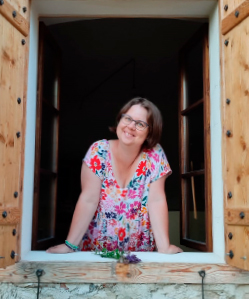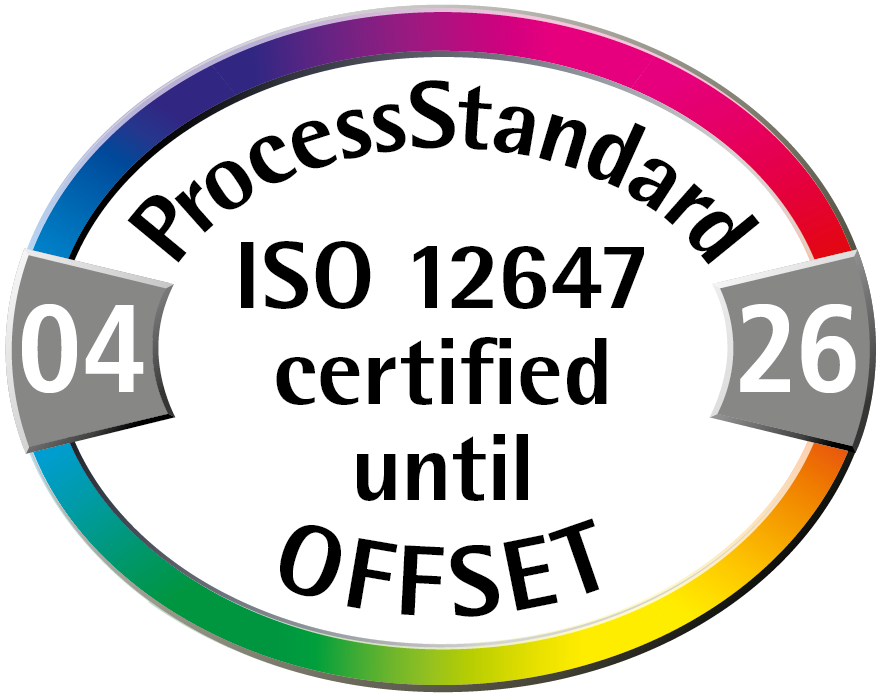Text by: Pavlína Badurová
From Gutenberg to Prochaska
How it all began…
The town of Český Těšín is one of the leading printing centres not only in the Czech Republic but also in Central Europe. The most important enterprise and the continuator of the famous printing tradition in the town is the FINIDR printing house, which celebrates its 30th birthday this year. With its production of up to 33 million books a year, it ranks among the largest in its field.

But the history of Těšín as a printing centre is much longer and the invention of the printing press much older. So, when did it all start?
With the invention of printing from top, mankind got its hands on an absolutely amazing invention, the printing press. It made it possible. To print (more cheaply) a larger number of books in large editions. This meant that the ideas from books reached people more quickly, and could be spread almost without limit. The discoverer of this epochal invention is considered Johannes Gutenberg from Mainz in Germany, around year 1440. Gutenberg’s original occupation was as a gem cutter, mirror cutter and goldsmith. This profession, which often involved working with hallmarks, probably led him to experiment with casting metal letters. It was not only movable letters (separate metal letters according to a single die – mass-produced) that came to his mind. He also added the discovery of lithography, the alloy from which the letters were cast (lead + tin + antimony), invented a new type of ink (linen fermage mixed with soot) and, to make matters worse, created a printing form (typesetting) and greatly improved the paper press to fully meet his requirements.
In order to equip his printing workshop, Gutenberg repeatedly borrowed funds from another Mohican merchant, Fust, for which he guaranteed the equipment of the printing house. After a few years, however, the two men got into a dispute which ended up in court. Gutenberg lost the case, and the printing house and part of the print run were confiscated to pay off the debt. Some of Gutenberg’s students and craftsmen left to ply their trade in other towns. Printing press was no longer secret of a single firm and spread further into the world. By year 1500, there were over 1,100 workshops in more than 250 European cities, causing almost information explosion in Europe.

The history of the first printing workshops and their craftsmen differs significantly from later established printing companies. The first printers did not settle in cities permanently. They came mostly to places where they saw the possibility of earning some money, for example, university towns, archbishop’s towns, bishop’s towns or the seat of government. There they could get specific contracts. When there was nothing to print, they moved on again. They had several reasons for this so-called itinerant printing, mainly financial – the opportunity to earn money and to try to succeed in the competition. It is these facts that bring issues for today’s historians and researchers.
If we look at a book today, we can easily find out all the details – its title, author, where, by whom and when it was printed. We also know the name of the publisher or publishing house and other detailed and necessary information. For the earliest period, finding out this information is very complicated. For one thing, as already mentioned, the printer was not based in one place, and also, at that time, no details were given in the books that would give us any idea of where and when the book was printed or who printed it. As a consequence of this situation, there are many questions which have few answers, and which are often disputed and unresolved to this day.
Printing came to the Czech lands relatively soon after its discovery. The first Czech-language book printed in our country is considered to be the Trojan Chronicle, which was published sometime after year 1476 in Plzeň. Apart from Plzeň, Vimperk and Prague, Kutná Hora and Brno were also important printing centres at that time.
If we take a closer look at our region, Silesia (or rather the part of it, Austrian Silesia, which Empress Maria Theresa did not lose in the Silesian wars with King of Prussia – Frederick the Great), we find no printer permanently settled in any of the local towns until the early 18th century. The first historically attested permanent printing house is found in Opava in 1716. The second oldest printing workshop was established in Těšín. It happened in year 1806.
At that time Těšín was quite a small town with a variety of merchants and craftsmen. Until the end of the 18th century, this was practically all what the town had to offer, including cultural life, which practically doesn’t exist. The big change came in 1776 with the return of the prominent Těšín native and enlightened Leopold Jan Šeršník from Prague.
He worked as a teacher in Těšín, but he also devoted himself to collecting. He was the founder of the first museum in the Czech lands. Šeršník is also known as a writer. His library with 12,000 collected volumes has been preserved to this day. As well as the collection items ranging from minerals to historical artefacts to various curiosities (such as a unicorn horn), which are part of the Museum of Silesia in Cieszyn. All these facts lead to the assumption that Šeršník needed somewhere to print his works and it was he who initiated the establishment of a printing house in Těšín so that he did not have to go all the way to Opava. Unfortunately, to this day, no one has been able to find out whether he was in contact with the first owner of the Těšín printing house or whether they even knew each other. The fact remains that during 1806 a certain Beinhauer founded the first printing shop in Těšín.
Augustin Fabián Beinhauer (* ? – † 1839) came from Olomouc and spent his apprenticeship years in a printing house in Opava, where he learned the skills of a typesetter. He then moved to Jihlava, where he became the owner of a small printing house. It seems to have done well in Jihlava, so Beinhauer bought another printing house, probably somewhere in Halič. Beinhauer was to put his brother-in-law in charge of the Halič branch. Unfortunately, this was not a happy choice. His brother-in-law was very unexperienced and got the company into great financial difficulties. Soon afterwards, the young manager of the Halič branch died, probably as a result of an epidemic. However, Beinhauer was unable to fix the problems he had caused, and so he lost the Halič printing house. Probably shortly before this, Beinhauer had acquired another branch in Těšín sometime during 1806. However, probably because of the problems with the business in Halič and with the family, Augustin Fabian Beinhauer was forced to give up the Těšín branch as well.

The first owner of the printing workshop in Těšín was the Beinhauer. As no prints from his workshop have probably survived or are known to exist, his successor Tomáš Václav Antonín Prochaska is considered the founder of the printing tradition in Těšín.
Tomáš Václav Antonín Prochaska (* 1771 Prague – † 1817 Těšín) joined the printing house in Prague’s Old Town in 1786 as an apprentice, where Václav Matěj Kramerius was also working at the same time. On 5 October 1806 he is reported to have bought a small printing shop from Augustin Fabian Beinhauer.
Why is Prochaska moving from far Prague to Těšín? All the facts lead to the assumption that it happened at the instigation of the aforementioned enlightened Leopold Jan Šeršník. He was staying in Prague at the time and probably met Prochaska. The fact that Šeršník was the godfather of one of Prochaska’s children, who was born in Těšín, may be proof of their closer ties. Whether this was really the case is not known for sure.
The original printing workshop was located in Těšín in street Stromá (today’s Cieszyn). In its early days, and for many years afterwards, it was a very small printing shop – only two or three people were employed there. The workflow was quite simple in the first decades of the printing house’s existence. It was based on the original technology of letterpress printing and the printing press, which could print up to two hundred prints per hour with three men.
One of the oldest works that saw the light of day in the printing house in Těšín is the so-called Kramář prints. These were small booklets of fairground and fairground songs with religious and folk themes. One of the oldest is ‘Nowá Piseň k swatýmu Jánu Nepomuckýmu – W Těssině wytisstěná z roku 1807’, which is in the collections of the Museum of Těšínsko. The first major printing venture was the publication of Šeršník’s Nachrichten von Schriftstellern und Künstlern aus dem Teschner Fürstenthum in 1810, a kind of cultural encyclopaedia of the Principality of Těšín.

Tomáš Václav Antonín Prochaska owned the printing house until his death in 1817. After him, his wife Anna Marie ran the company until 1826. Over time, the small printing shop developed into one of the largest printing houses in the whole of the later Austro-Hungarian Empire thanks to the diligence and entrepreneurial skills of the Prochaska family members (individual members of the family took turns in the management of the company for almost 130 years) in terms of its importance, volume of production and sophistication of technical equipment.
In the next issue of Finidrak you can look forward to continuation entitled: From Prochaska to Prochaska.

Pavlína Badurová
I was born in Český Těšín and I studied history at the Silesian University in Opava. Since 2002 I have been working at the Museum of Těšínsko, initially as a historian and curator of collections, and currently as the head of the Historical Building of the Museum of Těšínsko in Český Těšín.
My parents worked in a printing house. I am sure it stems from them – love and respect for books, fascination with the process of book production. As children, my brothers and I were very lucky and occasionally got a peek under the hood of the printing press. I still remember it. – the impressions, the sounds, the smells.
Through my studies and employment, I was exposed to regional history. Prochaska’s print shop is just a heartbreaker!






